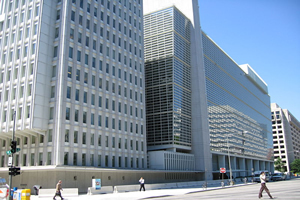The IMF (International Monetary Fund) is an organization based in the North American city of Washington; created in 1945, its objective is to establish economic cooperation on a global scale. Its work is aimed at ensuring financial stability, favoring international trade relations, implement measures to generate employment and sustainable development and seek ways to reduce the poverty.
Each country has a quota of participation in the fund, established preliminarily, the emphasis is on developed countries, which are the largest shareholders; for this reason, they are the ones who manage the organism.
The IMF loans are granted to countries with financial problems, for this it is necessary to meet the goals stipulated by the organization. implementation, by the debtor, of: budget adjustment, cuts in public spending, monitoring of the exchange rate, barring excessive consumption by reducing wages, among others.
When the IMF is triggered by a country in crisis, agents are sent to analyze the situation and, from there, direct the measures that may contribute to the resolution of the problems. The main objective of these agents is to prevent such problems from spreading and taking on greater proportions, which could have international repercussions in the economy.
The World Bank (World Bank) or BIRD (International Bank for Reconstruction and Development) is an agency of the United Nations created on July 1, 1944, the headquarters is located in the capital of the United States, Washington. Originally, it was created for the purpose of helping countries that were destroyed in World War II.
Do not stop now... There's more after the advertising ;)

World Bank Headquarters.
Today, approximately 150 member countries participate in the composition of the bank's capital. The quota value and voting rights are determined based on the level of participation in the world market. The main shareholder is the United States, a fact that grants it veto power in all decisions.
The World Bank provides financing to governments, which must be destined, essentially, for infrastructure transport, power generation, sanitation, in addition to contributing to measures of economic development and Social.
In addition to governments, large companies can acquire loans, however, it is necessary to present the feasibility of implementing projects, in addition, the company's country of origin must guarantee the payment of resources.
By Eduardo de Freitas
Graduated in Geography
Would you like to reference this text in a school or academic work? Look:
FREITAS, Eduardo de. "IMF and World Bank"; Brazil School. Available in: https://brasilescola.uol.com.br/geografia/fmiebancomundial.htm. Accessed on June 27, 2021.
I. It was initially created to mainly promote the Marshall Plan.
II. Loans granted can be used for any purpose.
III. Only governments can borrow.
IV. It does not establish rules for granting loans, which earns it harsh criticism.
Banks, bank, banks, history of banks, role of a bank, what is the main role of banks, what is a bank, functions of a bank, loans, interest, central bank, limit, credit operations.
